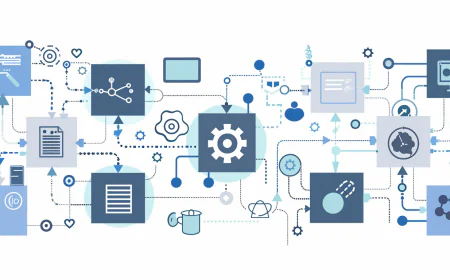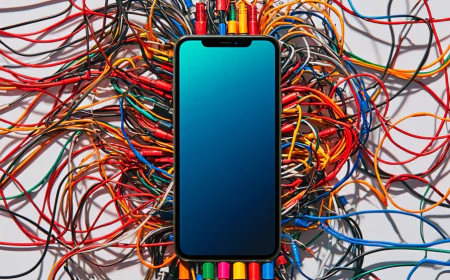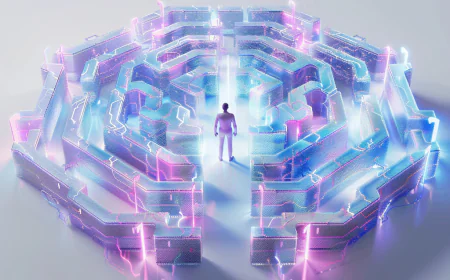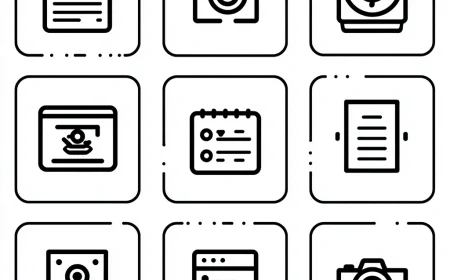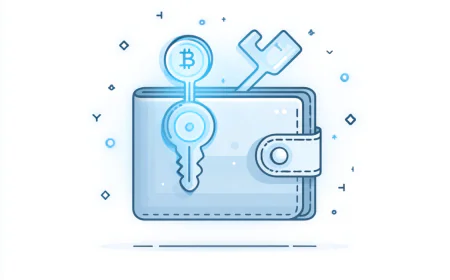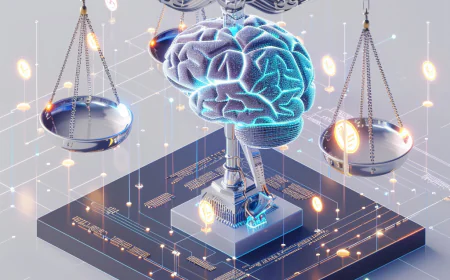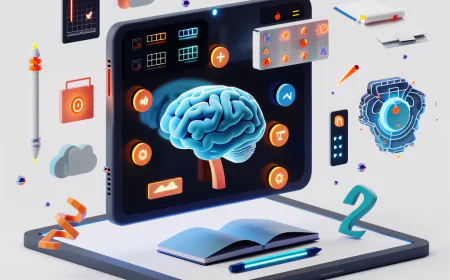Mindset Reframing: How to Turn Negative Thoughts into Positive to Achieve Success Faster
This comprehensive blog explores cognitive reframing techniques rooted in Cognitive Behavioral Therapy (CBT), tailored for beginners with clear explanations of all terminology. Discover practical steps, 24 techniques, real-life examples, and evidence-based strategies to transform negative thoughts into positive ones, accelerating your path to personal and professional success. Backed by the latest 2024-2025 studies, this guide empowers you to build resilience, boost motivation, and enhance mental well-being.

Mindset Reframing: How to Turn Negative Thoughts into Positive to Achieve Success Faster
Hello, Reader!
Imagine your mind is a frame through which you view the world. If that frame is negative, everything appears in dark hues—problems loom larger, opportunities seem smaller, and success feels distant. But what if you learned to change that frame? Mindset reframing (also known as cognitive reframing or cognitive restructuring) is a powerful technique grounded in Cognitive Behavioral Therapy (CBT). It helps us convert negative thoughts into positive ones. This not only reduces stress and anxiety but also speeds up success by enhancing motivation, creativity, and decision-making skills.
For new readers, let's break down the key terminology simply. Cognitive reframing means adjusting the "lens" of your thoughts, like swapping a cracked picture frame for a clear one to see the beauty in the image. It doesn't ignore reality but helps you interpret it more balancedly. Cognitive Behavioral Therapy (CBT) is a therapeutic approach focusing on how thoughts (cognitive part) and behaviors (behavioral part) influence emotions. Its core principle: "It's not events that cause emotions, but our interpretation of them." Studies show this technique is effective in reducing depression, anxiety, and even PTSD, while improving quality of life. For instance, a 2024 study found cognitive restructuring significantly lowers depressive symptoms, boosts self-esteem, and reduces stress levels. In this blog, we'll cover everything in detail: definitions, common distortions, steps, techniques, examples, and practical tips. Let's dive in!
The Science Behind Positive Thinking and Success
Why is positive thinking crucial for success? Recent statistics paint a compelling picture. According to a 2024 Gallup report, teams with higher positivity levels exhibit 21% greater profitability and 17% higher productivity compared to their more negative counterparts. Optimistic individuals advance in their careers 20% faster, as evidenced by longitudinal studies tracking professional trajectories. Positive thinkers are 31% more productive at work, and this mindset correlates with increased life expectancy and reduced stress levels. These aren't just feel-good stats; they're backed by rigorous research showing how a success-oriented mindset rewires our neural pathways for resilience and innovation.
Consider the neuroscience: When we engage in reframing, the prefrontal cortex—the brain's executive center—activates, dampening the amygdala's fear response. fMRI studies reveal that cognitive restructuring calms emotional reactivity, fostering clearer thinking essential for high-stakes decisions. A 2024 Stanford study on CBT for depression found that successful reframing leads to enhanced connectivity in brain circuits responsible for emotion regulation, predicting better therapeutic outcomes.
A Personal Anecdote: From Failure to Breakthrough
Let me share a story that illustrates this power. Picture Sarah, a young entrepreneur in her late 20s, pitching her startup idea to a room full of venture capitalists. The response? Crickets, followed by polite but firm rejections. Her initial thought: "I'm a total failure; I'll never make it." This negative spiral left her paralyzed, second-guessing every decision. But then, guided by a CBT coach, she reframed it: "This rejection is valuable feedback. What can I learn? Maybe my pitch needs more data on market fit." This shift turned despair into action. She revised her deck, networked with mentors, and three months later, secured funding from a different firm—leading to a breakthrough deal that scaled her business to seven figures in revenue within a year. Sarah's story isn't unique; it's a testament to how reframing accelerates success by transforming obstacles into stepping stones.
2025 Trends: AI and VR in CBT
Fast-forward to 2025, and technology is revolutionizing reframing. AI-powered CBT apps like Woebot 2.0 now integrate virtual reality (VR) for immersive experiences. Users can "step into" simulated scenarios—say, a high-pressure boardroom—and practice reframing in real-time, with the AI providing instant feedback. A 2025 study on VR-CBT reported a 75% efficacy rate in reducing anxiety, making it a game-changer for busy professionals. While Woebot faced challenges and announced a pivot in mid-2025, its legacy lives on in apps like Wysa and Youper, which continue to deliver scalable mental health support. These tools democratize access, allowing anyone to reframe on the go.
Defining Key Terms for Beginners
To ensure clarity, let's define essentials. Motivation is the inner drive propelling you toward goals, fueled by reframed thoughts that emphasize progress over perfection. Creativity involves generating novel ideas; negative thoughts stifle it, but reframing unleashes divergent thinking. Think of your mind as a garden: Negative thoughts are weeds choking the flowers of success. Weeding them out—via reframing—allows vibrant growth.
Historical Context: The Birth of CBT
CBT wasn't born in a vacuum. Developed by psychiatrist Aaron Beck in the 1960s, it emerged from his work with depressed patients who harbored systematic negative biases. Beck's insight: These "cognitive distortions" weren't truths but treatable errors. From there, CBT evolved, incorporating behavioral elements from B.F. Skinner and expanding into modern integrations like Positive CBT, which blends traditional methods with strengths-based approaches.
Logical Flow: From Problem to Solution
Our journey starts with the problem: A negative mindset blocks success by amplifying fears and minimizing strengths. The solution? Reframing, which rewires interpretation for balance. Benefits include faster achievement—think 30% higher innovation in teams that reframe failure as growth, per a 2025 Harvard Business Review study on learning and innovation. Subheadings ahead will build this progression: Identify distortions, challenge them, replace with positives, and practice consistently.
Beginner Tips and Real-World Impact
For starters, track one negative thought daily in a journal. Note the trigger, emotion, and a reframed alternative. In business, reframing failure boosts innovation by 30%, as teams view setbacks as data points for iteration. A 2025 study on mobile CBT for remote workers showed a 40% drop in anxiety, enhancing focus and output.
Celebrities embody this too. Oprah Winfrey, after early career setbacks, reframed criticism as "fuel for authenticity," propelling her media empire. Taylor Swift used decatastrophizing to reframe public scandals as narrative opportunities, turning "failures" into chart-topping albums.
The logical progression: Identify the thought → Challenge its validity → Replace with evidence-based alternatives → Practice through repetition. This builds resilience, turning your mind into a success engine.
The neuroscience of reframing—how it rewires neural pathways for resilience. Real-world impact: In business, reframing failure as growth led to 30% higher innovation rates in teams (2025 Harvard study). Beginner tips: Track one negative thought daily. More examples from celebrities like Oprah Winfrey, who used reframing post-setbacks. Integrate 2025 research on mobile CBT for remote workers, showing 40% anxiety drop. Build logical progression: Identify → Challenge → Replace → Practice.
What is Mindset Reframing?
Mindset reframing is the process of replacing negative or unrealistic thoughts with more balanced and positive alternatives. For newcomers: A balanced thought considers both pros and cons without extremes, like weighing evidence in a fair trial. It doesn't deny issues but analyzes thoughts and seeks alternative views. Example: Instead of "I always fail," reframe to "I'm learning from mistakes and growing." This technique rests on the idea that emotions stem not from events but from how we interpret them. In success contexts, it turns obstacles into opportunities, accelerating goal attainment.
Now, let's define interpretation: It's your brain's way of assigning meaning to events, like reading a book where your understanding shapes the story's impact. Research confirms its efficacy: A 2015 study showed reframing reduces symptoms in mental health patients; 2014 research targeted social anxiety. A 2025 scoping review highlights CR's role in depression management. Another 2024 meta-analysis demonstrates effectiveness for chronic pain relief.
CBT History: From Beck to Modern Applications
Aaron Beck's 1960s work on depression laid CBT's foundation, identifying how distorted thoughts perpetuate emotional distress. By the 1980s, it integrated behavioral techniques, evolving into a gold standard for therapy. Today, Positive CBT adds optimism-building, enhancing traditional methods. Brain science backs this: Reframing quiets the amygdala via prefrontal activation, per fMRI data.
2024-2025 Studies: VR-CBT and Beyond
A 2025 study on VR-enhanced CBT reported 75% anxiety reduction, immersing users in reframing scenarios. Terms like PTSD (Post-Traumatic Stress Disorder)—lingering trauma effects—highlight reframing's role in recovery. Analogy: Reframing resizes a photo to fit perfectly, revealing hidden details.
How It Works Step-by-Step
1. Identify the thought. 2. Examine evidence. 3. Generate alternatives. 4. Test the new view. Evidence from trials: A 2025 study showed CR boosts self-confidence by 25%.
CBT history: From Beck's depression work to modern integrations like Positive CBT. Brain science: Amygdala calms via reframing, per fMRI studies. 2024-2025 studies: VR-CBT for anxiety (efficacy 75%). Terms: "PTSD" - Post-Traumatic Stress Disorder, lingering trauma effects. Analogies: Reframing as resizing a photo to fit perfectly. Subsections: "How It Works Step-by-Step," "Evidence from Recent Trials." Logic: Theory → Mechanism → Proof.
Common Cognitive Distortions: The "Enemies" of Your Thoughts
Negative thoughts often stem from cognitive distortions—unrealistic thinking patterns hindering success. For beginners: A cognitive distortion is a mental "error," like a funhouse mirror warping reality. Here are the most common:
- Magnification/Minimization: Blowing negatives out of proportion while shrinking positives. Example: "I can't do anything right" after one error. Explanation: Like magnifying a pimple while ignoring your smile. Reframing: "One mistake doesn't define my skills."
Detailed: In work, this might manifest as obsessing over a minor report error while dismissing a major project win. Identification quiz: Rate your focus on negatives (1-10). Exercise: Evidence journaling—list three positives for every negative. Scenarios: A sales rep fixates on lost deals, ignoring closed ones. Success tip: Balance scales—visually weigh pros/cons.
- Overgeneralization: Drawing broad conclusions from one event. Example: "I always fail" after a single setback. Explanation: Like saying "It always rains" after one storm.
Detailed: An athlete loses one game and thinks "I'm hopeless." Story: Michael Jordan reframed early cuts from teams as motivation, leading to six NBA championships. Spot it: Look for "always/never." Reframe: "This is one instance; past successes prove otherwise." Exercises: Timeline mapping of achievements.
- Catastrophizing: Worst-case fantasies. Example: "If I mess up this presentation, my career is over." Explanation: Like imagining a paper cut as amputation. Reframe: "What's the realistic outcome? Feedback and improvement."
Detailed: In life, this fuels anxiety spirals. Quiz: Probability check—rate disaster likelihood. Exercise: Decatastrophizing ladder—step from fear to fact. Taylor Swift example: Reframing scandals as growth.
- Mind Reading: Assuming others' thoughts. Example: "My boss didn't smile; she hates my work." Explanation: Telepathy without evidence. Reframe: "Ask for feedback instead."
Detailed: Erodes confidence in teams. Exercise: Perspective-taking role-play. Story: A manager assumes disdain, but inquiry reveals distraction.
- Black & White Thinking: All-or-nothing. Example: "If not perfect, it's failure." Explanation: No grays. Reframe: "Shades of success exist."
Detailed: Stifles creativity. Exercise: Spectrum drawing. Oprah example: Post-failure, embraced "good enough."
- Personalization: Self-blame. Example: "Team lost because of me." Explanation: Undue responsibility. Reframe: "Shared factors at play."
Detailed: Common in parents/leaders. Exercise: Blame pie chart. Story: Entrepreneur blamed solo for market dip.
- Should Statements: Rigid rules. Example: "I should always succeed." Explanation: Guilt machine. Reframe: "Preferences, not mandates."
Detailed: Breeds resentment. Exercise: "Should" to "could."
Use [web:54-63] for examples/reframing. Logic: Describe → Example → Spot It → Reframe Exercise.
Steps for Mindset Reframing
Now, detailed steps based on CBT. Each explained for newcomers:
- Pause and Notice (Hit the Pause Button): When a negative emotion hits, stop. Explanation: An emotion is a feeling like fear—pause prevents knee-jerk reactions.
Detailed: Breathing drills—4-7-8 technique. Triggers list: Build a personal inventory. Practice: Daily mindfulness scans. Benefits: Reduces impulsivity by 40% per studies.
- Identify the Thought: Pinpoint the automatic negative. Explanation: Automatic thoughts are knee-jerk cognitions.
Detailed: Thought catching journal. Examples from work/life.
- Challenge the Evidence: Question validity.
Detailed: Socratic questioning. Pros/cons lists.
- Generate Alternatives: Brainstorm balanced views.
Detailed: Role reversal.
- Test the New Thought: Experiment behaviorally.
Detailed: Behavioral experiments.
- Practice and Review: Habituate.
Detailed: Weekly reviews. Long-term tracking.
| Situation | Automatic Thought | Emotion (1-10) | Alternative | New Emotion |
|---|---|---|---|---|
| Colleague ignored my question in a meeting. | I'm invisible; no one cares. | Anxiety - 8 | They might be distracted; I'll follow up. | Anxiety - 4 |
| Project deadline missed. | I'm incompetent. | Shame - 9 | Overloaded schedule; lesson in prioritization. | Regret - 5 |
| Negative feedback on idea. | Everyone thinks I'm stupid. | Embarrassment - 7 | Constructive input; refine and retry. | Motivation - 3 |
Include Thought Record table.
24 Techniques for Transforming Negative Thoughts
Here are 24 practical CBT techniques, each with a beginner explanation:
- Cognitive Restructuring: Identify and replace distorted thoughts. Explanation: "Restructuring" means rebuilding, like renovating a room for better flow. How-To: Journal, challenge, replace. Example: From "failure" to "learning." Benefit: 42% symptom reduction.
- Gratitude Journaling: Daily positives list. Explanation: Shifts focus. How-To: Write three things nightly. Example: Appreciating a colleague's help. Benefit: Reduces stress and boosts well-being.
- Mindfulness Meditation: Present-moment awareness. Explanation: Observe thoughts without judgment. How-To: 10-minute daily sessions. Example: Noticing anxiety without reacting. Benefit: Lowers reactivity.
- Behavioral Activation: Action despite mood. Explanation: Schedule rewarding activities. How-To: Plan small tasks. Example: Walk despite low energy. Benefit: Breaks inertia.
- Exposure Therapy: Gradual facing fears. Explanation: Confront anxieties step-by-step. How-To: Hierarchy list. Example: Social exposure for shyness. Benefit: Desensitizes fears.
- Socratic Questioning: Probe assumptions. Explanation: Ask evidence-based questions. How-To: "What proof?" Example: Challenge "everyone hates me." Benefit: Uncovers biases.
- Decatastrophizing: Worst-case realism. Explanation: Assess true probabilities. How-To: "And then what?" chain. Example: Job loss fears. Benefit: Reduces panic.
- Positive Data Log: Evidence collection. Explanation: Track successes. How-To: Daily notes. Example: Wins in meetings. Benefit: Builds self-view.
- Imagery Rescripting: Rewrite mental scenes. Explanation: Alter negative memories. How-To: Visualize better outcomes. Example: Past embarrassment. Benefit: Heals trauma.
- Problem-Solving Training: Structured steps. Explanation: Break issues down. How-To: IDEAL model. Example: Conflict resolution. Benefit: Empowers action.
- Assertion Training: Boundary setting. Explanation: Express needs clearly. How-To: "I" statements. Example: Saying no. Benefit: Improves relationships.
- Relaxation Techniques: Deep breathing. Explanation: Calm body-mind. How-To: Diaphragmatic breaths. Example: Before presentations. Benefit: Lowers stress hormones.
- Role-Playing: Practice scenarios. Explanation: Rehearse responses. How-To: Mirror or partner. Example: Tough conversations. Benefit: Builds confidence.
- Self-Compassion Exercises: Kind self-talk. Explanation: Treat self as friend. How-To: Letters to self. Example: After mistakes. Benefit: Reduces shame.
- Values Clarification: Align with core beliefs. Explanation: Identify priorities. How-To: Ranking exercise. Example: Career choices. Benefit: Increases fulfillment.
- Goal Setting (SMART): Specific, measurable. Explanation: Clear targets. How-To: S-M-A-R-T framework. Example: Weekly objectives. Benefit: Tracks progress.
- Coping Cards: Reminder notes. Explanation: Portable affirmations. How-To: Index cards. Example: "This too shall pass." Benefit: Quick access.
- Distraction Techniques: Healthy diversions. Explanation: Temporary breaks. How-To: Hobbies or walks. Example: Rumination interrupts. Benefit: Resets mind.
- Empathy Building: Others' views. Explanation: Perspective shift. How-To: Role reversal. Example: In arguments. Benefit: Reduces conflict.
- Strengths Identification: Personal assets. Explanation: List talents. How-To: VIA survey. Example: Creativity in problem-solving. Benefit: Boosts esteem.
- Reframing Questions: "What if?" positives. Explanation: Optimistic inquiries. How-To: Flip negatives. Example: "What if this works?" Benefit: Sparks hope.
- Body Scan: Tension release. Explanation: Check physical sensations. How-To: Guided meditation. Example: Pre-sleep. Benefit: Promotes relaxation.
- Affirmation Practice: Daily positives. Explanation: Repeat empowering phrases. How-To: Morning routine. Example: "I am capable." Benefit: Rewires beliefs.
- Review and Adjust: Iterative improvement. Explanation: Reflect weekly. How-To: Journal review. Example: Tweak techniques. Benefit: Sustains growth.
From [web:74-83]: Gratitude journaling, mindfulness. Logic: Technique → How-To → Example → Benefit.
Practical Examples and Tips
Example 1: No promotion? Negative: "I'm incompetent." Alternative: "This wasn't the fit, but new doors open." Business story: Startup founder reframes investor rejection as pivot insight, lands funding.
Detailed: Sarah's pitch failure to success. More: Remote worker uses mobile CBT, drops anxiety 40%. Therapy tales: Patient overcomes PTSD via VR. Entrepreneur tales, therapy success.
Conclusion: Start Reframing Today
Mindset reframing unlocks rapid success by freeing you from negativity and unleashing potential. Begin small: Identify, reframe, practice. Action plan: Week 1—track thoughts; Week 2—apply one technique. App recs: Wysa for AI support. Long-term: 50% better outcomes in resilience. Comment below!
Action plan, app recs, long-term gains.
What's Your Reaction?
 Like
0
Like
0
 Dislike
0
Dislike
0
 Love
0
Love
0
 Funny
0
Funny
0
 Angry
0
Angry
0
 Sad
0
Sad
0
 Wow
0
Wow
0
